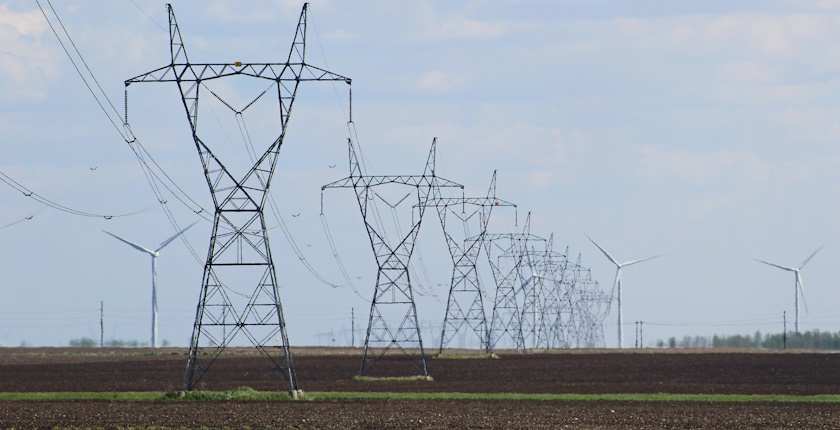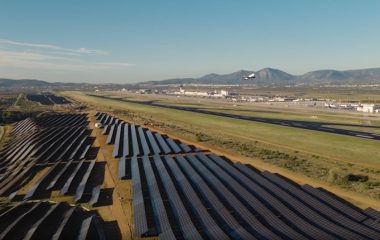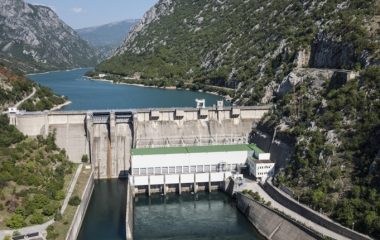
Photo: American Public Power Association on Unsplash
Grids are becoming a bottleneck for the transition to net zero emissions, given the power demand projections and the growing volume of renewable energy projects waiting for connection permits, the International Energy Agency said. In a new study on electricity networks, it estimated that the global grid needs to be more than doubled to 166.4 million kilometers by 2050.
Electrification of everything. The world’s economy is switching traditional sectors to power to end the use of coal and cut other fossil fuels to a minimum. But demand will also be driven by electric mobility, decarbonization of heating and the production of emissions-free hydrogen, requiring a massive expansion of the grids. The goal is to eliminate net greenhouse gas emissions by mid-century so that global warming is contained, ideally, at a maximum of 1.5 degrees Celsius by 2100.
In its first Electricity Grids and Secure Energy Transitions report, the International Energy Agency estimated that total length of the power network needs to be increased by 116% to 166.4 million kilometers by 2050. Just by 2040, reaching national goals means adding or refurbishing a total of over 80 million kilometers, the equivalent of the entire existing global grid.
Such a line could be wrapped around the Earth 2,000 times.
Annual grid investments need to be doubled to USD 600 billion by end of decade
The acceleration of renewable energy deployment calls for modernizing distribution grids and establishing new transmission corridors to connect renewable resources – such as photovoltaic projects in the desert and offshore wind turbines out at sea – that are far from demand centers like cities and industrial areas, the authors explained.
Ten times more wind and photovoltaic capacity is waiting for grid connection permits than the overall 2022 additions
However, at least 3 TW of renewable power projects are waiting in grid connection queues, of which half is in advanced stages – equivalent to five times the combined amount of PV and wind capacity added in 2022. It led the agency to conclude that grids are becoming a bottleneck for net zero. The number of projects is likely to be higher, as data is for countries accounting for half of global wind and solar capacity.
While investment in renewables has been increasing rapidly – nearly doubling since 2010 – global investment in grids has barely changed, remaining static at around USD 300 billion per year, IEA said. The organization calculated that the figure must double by 2030.
Recommendations in the report include expanding and strengthening grid interconnections within countries, between countries and across regions to make electricity systems more resilient and allow them to better integrate rising shares of solar and wind power. Grid regulation needs to incentivize grids: address administrative barriers, reward high performance and reliability, and spur innovation, according to the IEA.
It urged grid developers and operators to embrace digitalization for resilience and flexibility.
Annual growth over the past five decades was one million kilometers. The majority of the expansion occurred in distribution grids, which account for about 93% of total length.

Kelly: Even US is unable to achieve net zero without switch to command economy
Notably, Michael Kelly, an emeritus professor at the University of Cambridge and a fellow at several national academies of science and institutes, outlined the energy transition from a different perspective.
In an opinion piece published by the Telegraph, he wrote that the transmission grid in the United States, currently at 320,000 kilometers, would need to grow by 60% by 2050. The costs are estimated at USD 600 billion. At the same time, in Kelly’s view, the entire distribution network of 8.85 million kilometers has to be upgraded.
The overall implied expenditure to reach net zero in the US exceeds USD 100 trillion, he claimed. “The idea that net zero can be achieved on the current timelines by any means short of a command economy combined with a drastic decline in standards of living – and several unlikely technological miracles – is a blatant falsehood,” Kelly added.


















Be the first one to comment on this article.